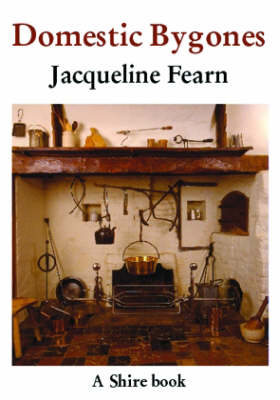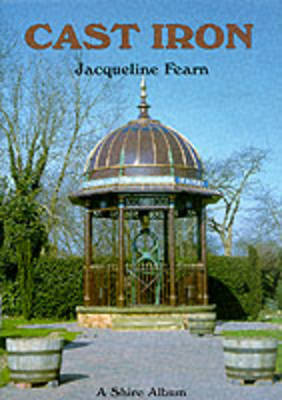Shire Album S.
3 primary works
Book 2
a lot of items that would have been familiar to householders of the last few centuries are illustrated in this book and placed in the context of the domestic life of the period, describing how they developed and how they were used. Such obsolete household utensils now attrat the interest of collectors, but it is still possible to acquire some of them relatively inexpensively; besides providing the owner with a piece of social history, many of them are quite decorative. The bygones describes in this book range from fire irons an the equipment used for cooking on the open fire to the moustache cup and the goffering stick.
Book 2
Cast iron has made a tentative comeback. Street improvement schemes often include Victorian-style litter bins, bollards and street signs which are, or look like, cast iron and numerous other items such as garden furniture and door porters are available. By the second half of the nineteenth century cast iron was used for so many purposes that seem to us inapporpriate and bizarre that it is hardly surprising that people turned with relief to lighter, more sophisticated metals and man-made materials when they became available. It had been used everywhere: in constructing and embellishing buildings, in very room of the house, in the garden, in and under the streets, in offices and factories, on farms, in bridges and even for toys and jewellery. It was robust and solid but was at the same time capable of being moulded into intricate shapes and fine tracery; it was cheap but would last forever. This book looks at the history of the material that made the Industrial Revolution possible and some of the products we appreciate today not only for the imagination and craftsmanship with which they were produced but also because they reflect the style, vigour and confidence of the era.
Book 16
The craft of the thatcher probably gives more pleasure to people than any other of our rural crafts. Thatching is a craft most people know nothing about and which is commonly thought to be dying out. In fact, thatchers in all three materials - water reed, long straw and combed wheat reed - now have an assured livelihood after two centuries of uncertainty. This book outlines the history of thatching in Britain from its use as the commonest form of roofing to the present day and explains how the thatcher works with his traditional materials.


